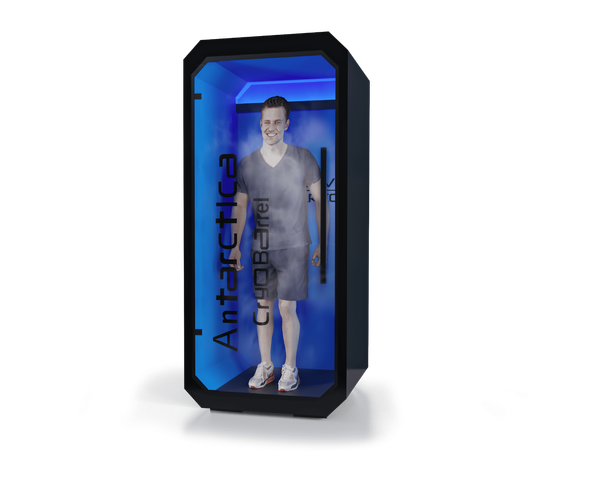Healthcare E-Commerce: 5 Key Trends to Follow
Table of Content
Numerous entrepreneurs and well-established companies are turning their focus to the healthcare e-commerce industry, and with good reason. The global healthcare e-commerce industry is anticipated to soar from $366 billion in 2023 to $874 billion in 2028.
Recognizing the vast potential at play, more and more businesses are deciding to strategically invest in the right healthcare advancements to make the most of this growth and establish a foothold in this market.
To help you out, this post will cover five important healthcare e-commerce trends to follow in 2024-2028, why they're making waves in the industry, and numbers to support their projected growth. Let’s get started.
1. AR/ VR/ MR
The augmented reality (AR), virtual reality (VR), and mixed reality (MR) technologies are creating a buzz everywhere, including healthcare. Augmented reality works by adding digital information to the real world, virtual reality works by immersing the user into a fully computer-generated environment, and mixed reality seamlessly blends elements of real and virtual worlds.
From mental health and cognitive decline treatments to orthopedic operations and more, AR, VR, and MR technologies are being used in various healthcare applications. For instance, surgeons use AR to navigate surgical procedures with real-time information.
VR enables trainees to acquire hands-on experience without real-world consequences. MR can help people with autism identify facial expressions and practice daunting job interviews. It can also aid amputees in relieving the sensations of pain associated with phantom limbs.
These are just a few examples of how doctors and patients use AR, VR, and MR tools to treat illnesses and manage certain health conditions. As a result, the AR/VR/MR market, which was valued at $26 billion in 2021, is forecasted to reach $242 billion by 2028, growing at a CAGR of 36% in the forecast period.
2. Automated Appointments, Communications, and Claims
In addition to stringent regulations, healthcare organizations grapple with managing large patient data volumes and time-consuming, repetitive processes, which adversely impact the speed and quality of service. Consequently, businesses in the healthcare industry are turning to investments in robotic process automation.
Put simply, robotic process automation involves using software robots to handle high-volume, rule-based, and repetitive tasks such as claims processing, patient scheduling, data entry, and report generation, among others.
The increasing number of healthcare providers adopting RPA technology to improve their operations demonstrates the growing demand for its adoption in the healthcare e-commerce sector. Already, the global industry for RPA in healthcare is expected to grow from $1.75 billion in 2023 to $3.42 billion in 2028, representing a CAGR of 14.4% during the forecast period.
While factors like unsuitable infrastructure present adoption difficulties, healthcare providers can overcome these difficulties by educating their personnel, investing in security measures, and working with a dependable company providing RPA solutions to automate their processes while guaranteeing the safety of the organization’s data.
3. Hyper-Targeted Healthcare
Personalized healthcare leverages diagnostic testing, an individual’s medical history, and the growing understanding of genetics to offer tailored medications and care treatments. Gone are the days of one-size-fits-all treatments and medical interventions. Instead, today’s healthcare providers focus on understanding and catering to every patient's unique needs to improve their medical circumstances and meet their expectations more effectively. Precision medicine, another term for personalized healthcare, is such an approach with growing adoption.
According to MarketsandMarkets, the global precision medicine market was valued at $29.1 billion in 2023, and it’s estimated to reach $50.2 billion by 2028 with a CAGR of 11.5% from 2023 to 2028. Such growth in the precision medicine market is largely connected to the realization of the potential these targeted treatments hold.
4. Securing Doctor-Patient Interactions
Cybersecurity in healthcare deals with protecting electronic assets from unauthorized access, disclosure, and use. With the rise of interoperable technologies like electronic health records (EHR), IoT health devices, and remote patient monitoring, healthcare organizations now deal with enormous amounts of sensitive information, including medical records, social security numbers, financial details, etc., which make them attractive targets for cybercriminals.
From malware infections to ransomware attacks, phishing attacks, and more, cyber threats affecting the healthcare e-commerce industry result in numerous adverse effects, including longer patient stays, increased mortality rates, and damage to an organization's finances and reputation.
One example is the 2020 CommonSpirit ransomware attack. In this incident, hackers gained access to the personal data of over 600,000 patients and due to an attacked system no longer working, a three-year-old patient was accidentally given five times their prescribed medication, although they made a full recovery.
To minimize and prevent the consequences of these attacks, healthcare companies are investing in protective measures such as firewalls and intrusion detection systems to prevent successful ransomware attacks, multifactor authentication to secure patients' and hospitals' medical devices, and robust network surveillance technologies to monitor and handle risks as they arise, among other technologies. The worldwide healthcare cybersecurity market is projected to grow from $19.1 billion in 2022 to $48.8 billion in 2028.
5. Popularization of Intelligent Mobile Healthcare
mHealth, or mobile healthcare, implies the use of mobile devices and wireless infrastructure such as smartphones, tablets, and virtual assistants to facilitate the delivery of healthcare services. While North America dominated the global mHealth market in 2023, the industry's role in providing accessible healthcare to underserved and low-income countries, such as Africa, is becoming increasingly recognized. There are over 7 billion mobile device subscriptions worldwide, and over 70% of them belong to persons in low and middle-income nations.
With the adoption of mHealth, healthcare organizations can now treat patients in these previously unreachable parts of the world, thus improving medical accessibility, efficiency, and affordability. As a result, mHealth is poised to play a huge role in the global healthcare ecosystem, with analysts forecasting it to grow from $62.81 billion in 2023 to over $288.53 billion by 2028.
Accessible healthcare aside, mHealth apps are also displacing older technologies in multiple domains. For instance, AI technologies can now diagnose asthma patients just by listening to them breathe, individuals can have their vital signs remotely monitored by mHealth apps, and instead of using medical bands, patients can now store, secure, and share their medical information with the help of lock software.
In a Nutshell
To sum up, the healthcare e-commerce landscape of 2024-2028 is marked by significant trends poised to shape the industry’s future. These include the use of immersive AR, VR, and MR technologies, the adoption of robotic process automation to streamline operations and eliminate waste, the rise of precision medicine and personalized care, the heightened focus on cybersecurity, and the widespread popularity of mobile healthcare.
While no one can predict what exactly the future will hold, staying abreast of these trends will no doubt position your organization to thrive as the industry continues to grow.










